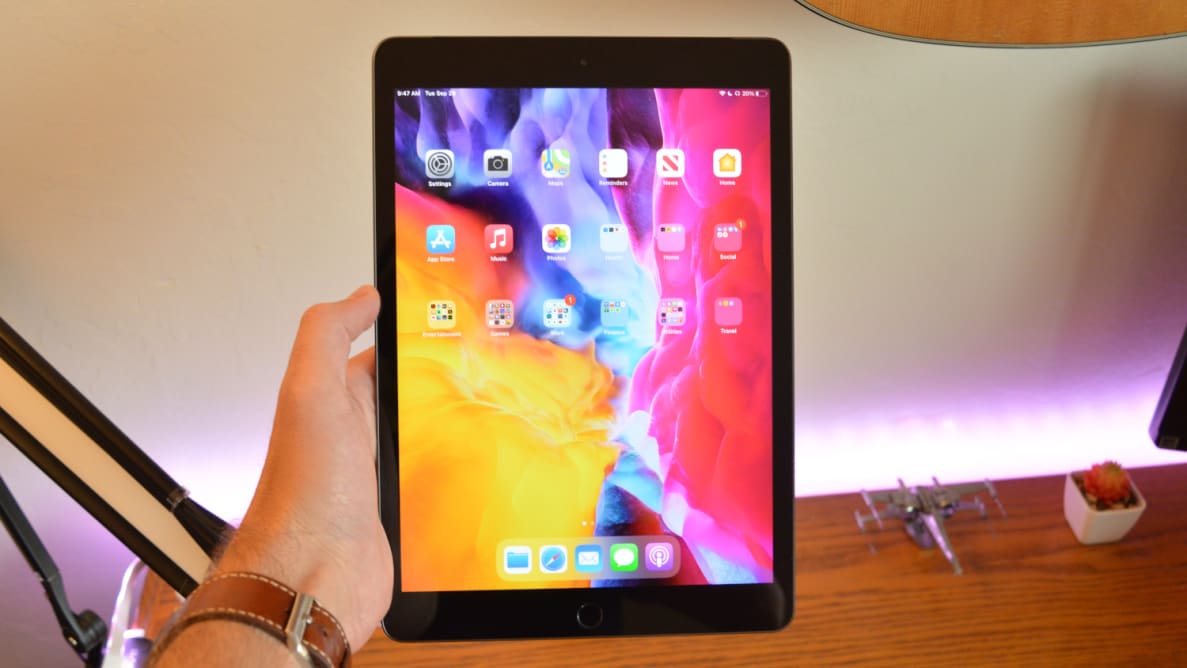Pros
-
Fast processor
-
Snazzy display
-
Improved productivity
Cons
-
Aging design
-
Base storage too low
-
No multi-user support
That said, you probably don't need to plunk down the cash if you already have an iPad from the past couple of years. Apple has upgraded the new device, but the updates are so minor that only first-time buyers or those with an iPad that’s a few years old should consider upgrading.
About the 2020 iPad
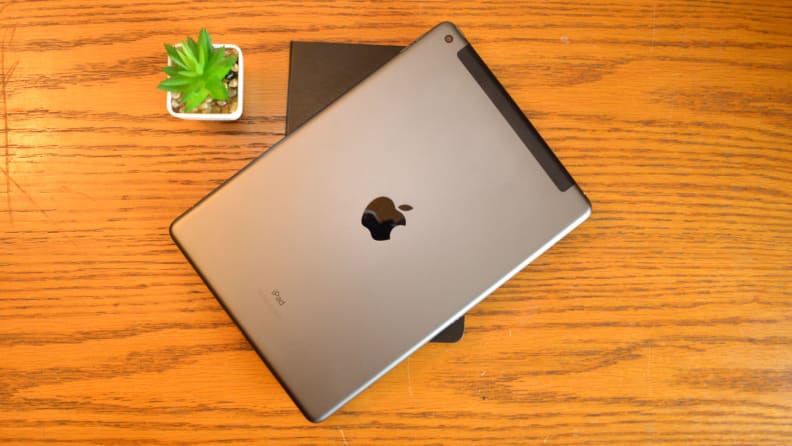
You’d be forgiven for confusing the 2020 iPad with the 2019 iPad. It looks exactly the same. It’s got the same 10.2-inch display, the same selection of colors, and the same relatively thick bezels with a Home Button in the chin. It also has the same 10-hour battery life, which is fine, but not amazing, and got us through around three days of use at a few hours per day.
So what about those updates we mentioned? They’re all under the hood. Actually, there’s really only one big upgrade in the form of Apple's A12 Bionic chip.
Here’s a look at the 2020 iPad’s specs:
- Chipset: Apple A12 Bionic
- RAM: 3GB
- Storage: 32GB, 128GB
- Rear-facing camera: 8-megapixel
- Front-facing camera: 1.2-megapixel
- Connectivity: Bluetooth 5.0, WiFi, GSM/CDMA/HSPA/EVDO/LTE (Cellular model only)
- Biometric authentication: Touch ID
- Display: 10.2-inch display with 264 pixel-per-inch density
- Connections: Lightning
Pricing is relatively simple, considering there’s only one size, but there are still a few choices as far as storage and connectivity, listed below:
- 32GB iPad: $329 for WiFi only, $459 for the cellular model
- 128GB iPad: $429 for WiFi only, $559 for the cellular model
Note: The cellular models will work away from WiFi via cellular connection, but they'll also require a separate data plan from your carrier.
What we like
Fast performance
As mentioned, the A12 Bionic processor is the major update here, up from the aging Apple A10 Fusion chip found in the previous-generation model. It essentially means that the latest iPad should be able to handle pretty much everything you can throw at it in 2020. We tested the iPad for a range of different activities, and it easily handled all of them.
For starters, we used the device for multi-tasking with productivity apps while writing this review, and did so without any slow-downs or stutters. The device loads games like Call of Duty: Mobile quickly--and when loading games side-by-side with an A10-equipped iPad, it loaded a good few seconds quicker. It even handled some basic image editing without any issues. It's an all-around powerful tablet, and it should stay powerful enough for most users for at least a few years.
Faster performance is about more than just loading things quicker, though. It also means the new iPad will likely be supported by iPadOS updates for longer. And, while both the last-gen iPad and the new iPad can handle most of today's apps perfectly fine, the faster processor will help ensure that the new iPad can more easily handle apps that come out three or four years down the road.
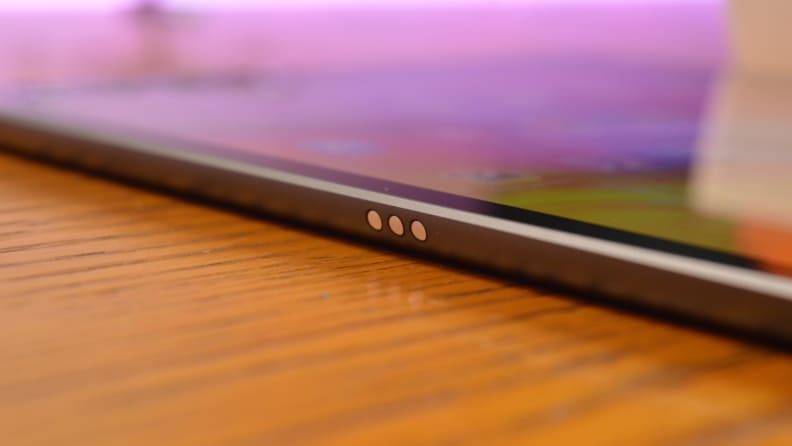
Of course, if you really need a workhorse, it’s still worth considering the iPad Pro or upcoming iPad Air. Both have even faster processors, and are built with productivity in mind.
Don’t be fooled by the name—the iPad Pro's A12Z is quite a bit more powerful than Apple's standard A12 Bionic, and the A14 in the new iPad Air is likely to be an upgrade too. That said, only those who want to use their device for things like video editing or heavy mobile gaming will need the extra oomph.
While the processor on the iPad has been upgraded, the standard storage of just 32 GB has not; that really isn’t all that much storage in 2020. If you can afford it and don’t lean entirely on cloud-based apps, it’s probably worth upgrading to the 128 GB model. We’re hoping Apple upgrades the entry-level model to offer 64 GB next time around.
If you plan on using your iPad for social media, playing games, watching movies, browsing the web, and even some productivity apps, the 2020 model is more than enough iPad for you.
A relatively impressive display
The display on the 2020 iPad isn’t groundbreaking by any means, but it definitely looks good and it makes watching movies on Netflix and playing games a great experience.
At 10.2 inches, the screen should be more than large enough for most. The 264 pixel-per-inch pixel density makes for a generally crisp image. For comparison, a 55-inch 4K TV has a pixel density of around 80 ppi, while a 16-inch MacBook Pro has a 226 ppi pixel density. While it doesn't offer the inky black levels of an OLED display, it offers good enough contrast between the brightest and darkest images for the majority of uses.
That said, it’s important not to expect the iPad Pro display experience. The iPad Pro has a 120 Hz refresh rate (double the standard iPad) for impressive motion reproduction. The 2020 iPad doesn’t reach those heights, but the display is still more than good enough for most.
iPadOS brings productitivity to the forefront
Apple’s iPadOS isn’t all that different from the iPhone’s iOS, but the changes between iOS and iPadOS that are present help make for a more productive experience, which is a good thing.
It's still easy to navigate, and if you're used to using an iPhone you'll get around it with no issues. Now on iPadOS 14, the operating system offers split-screen view, which works quite well here. There’s also Slide-Over, which is a great way to keep messaging apps available in the background, and you can keep your newly-revamped widgets on the home screen for easy access.
New for this iteration is Scribble, which allows you to use the Apple Pencil to hand write into text fields instead of typing. It works pretty well, though it does take some getting used to, as you have to write in the proper spot for it to be converted to text. Apple's handwriting recognition, however, is very good, and even though my handwriting isn't great, it always translated my words properly unless I purposefully tricked it.
There’s still room for improvement, of course. Apple’s MacOS and even tvOS both support multiple users. If Apple truly wants to position the iPad as a laptop replacement, iPadOS needs multi-user support as well. That, however, is a software issue—so if iPadOS gets that feature in the next few years, it should come to this iPad through an update.
What we don't like
An aging design
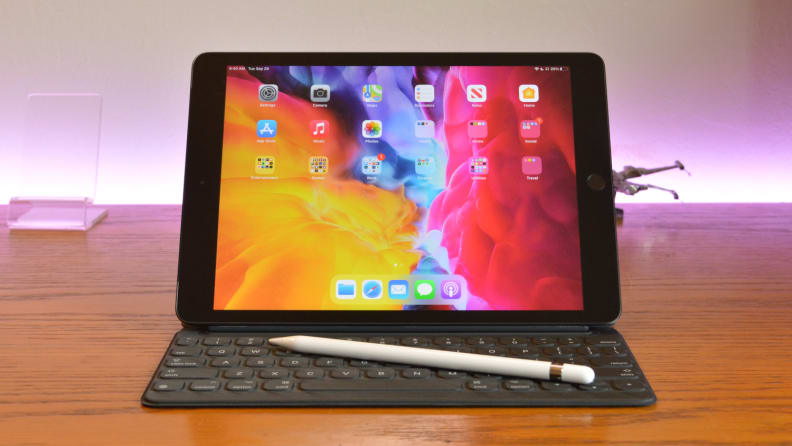
The 2020 iPad isn’t ugly by any means. From the moment it comes out of the box, using the device is a premium experience, and even after all these years the aluminum unibody design feels great. But it’s also time for a change.
The 2018 iPad Pro introduced Apple’s new iPad design language to the world, and the 2020 iPad Air continues that trend. Hopefully next year Apple will slim down the bezels on the entry-level iPad and add either a power button-mounted Touch ID or Face ID.
Limited accessories
The second-generation Apple Pencil is natural to hold and magnetically attaches to the side of the new iPad Pro and forthcoming iPad Air. The first-generation Apple Pencil (the only one compatible with the new iPad) is certainly serviceable, but plugging it into the iPad's Lightning port to charge is incredibly awkward, and the fact that it doesn't have a flat edge like the second-gen Pencil makes it feel less natural to use.
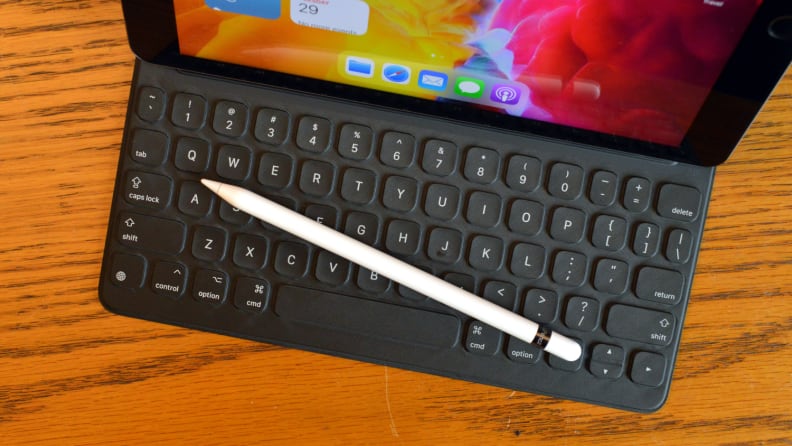
While reviewing the iPad Pro, I found the Magic Keyboard an absolute joy to use. From the high-end trackpad to the great typing experience, it made the iPad Pro feel more like a laptop than ever. Unfortunately, it doesn’t work with the entry-level iPad—instead you’ll have to go for the Smart Keyboard. To be clear, the Smart Keyboard is a decent accessory, but after typing out this whole review with it, I can safely say that it just doesn’t offer anywhere near the same typing experience as Apple’s higher-end accessory.
Of course, these are nit-picks. Third-party accessories at least partially fill the void, not to mention the fact that the Magic Keyboard is way too expensive at $299, while the Smart Keyboard is $159.
Should you buy it?
Only if you really need an iPad now
If you’re in the market for an iPad simply because of the fact that you want a decent tablet for day-to-day use, this is the iPad to go for. If you want a productivity workhorse, it’s still worth considering the iPad Pro or even-better, new iPad Air when it's released, which offers very similar specs as the Pro for a lower price. But, for almost everything else, the basic iPad is still the way to go.
If you already have a solid iPad, it likely isn’t worth upgrading. Even my two-year-old 9.7-inch iPad offers a similar experience to this device, despite not being quite as powerful. Hopefully Apple will launch a more impressive upgrade next year, and if you can wait, it may be worth doing so. But if your old iPad is really slowing down, or you’re buying an iPad for the first time, the 2020 iPad is a sound purchase you won't regret.
Meet the tester
Christian de Looper is a consumer tech journalist with over a decade of experience. De Looper has covered all areas of the consumer tech industry, from smartphones to smart homes — and has attended all of the major trade shows, including CES. De Looper has always been interested in consumer technology, but his love for gadgets and electronics blossomed into a full-blown passion when he started writing about it while completing his degree in audio production. Since then, he has written for many of the top tech publications, including [Digital Trends](https://www.digitaltrends.com/users/delooper/), [Tom’s Guide](https://www.tomsguide.com/author/christian-de-looper), [TechRadar](https://www.techradar.com/author/christian-de-looper), and many more. He loves getting his hands on all of the latest gadgets, but when he’s not reviewing tech, he can be found hanging out with his family or producing music.
Checking our work.
Our team is here to help you buy the best stuff and love what you own. Our writers, editors, and experts obsess over the products we cover to make sure you're confident and satisfied. Have a different opinion about something we recommend? Email us and we'll compare notes.
Shoot us an email
